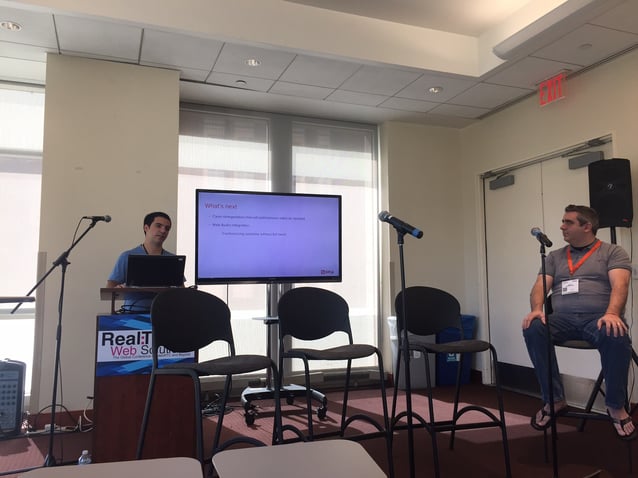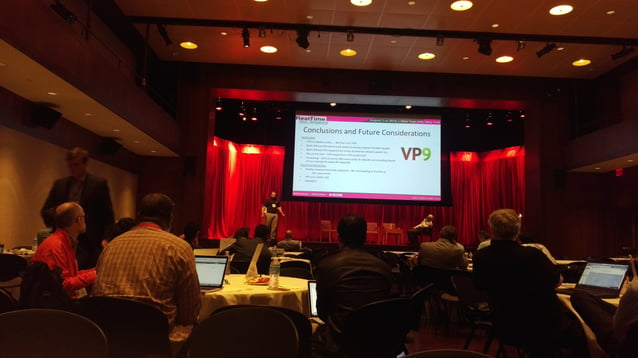Our CTO John Riordan and Lead Engineer James Criscuolo both spoke on panels at the 2016 Real Time Web Solutions Conference on August 3rd. OnSIP was a silver sponsor of the event, which took place August 1-4 at NYU's Kimmel Center in New York City.
The Real Time Web Solutions Conference is designed to highlight how developers can use WebRTC to deliver solutions for business-grade communications projects. Our team attended the conference to discuss our open source SIP/Javascript stack, SIP.js, and participate in the general dialogue surrounding SIP and WebRTC.
James Criscuolo Tackles SIP.js and Signaling

James Criscuolo's shared his panel, "How to Get Started Building Your First WebRTC Application", with Dr. Alex Goulliard. James approached the topic from his own angle of expertise. He discussed SIP as a signaling mechanism, a solution he said was viable from both a technical and commercial standpoint in WebRTC development.
Communications platforms, such as those built by VoIP companies, already have User Agent allocation systems to 'find' users across the web and PSTN. James noted that this ability to 'find' other User Agents can be harnessed for WebRTC apps that need a mechanism to connect User Agents within the app.
James also discussed SIP.js, an open source Javascript stack he co-authored. SIP.js has commands tailored around SIP and uses SIP terminology within the language for clarity and ease of use. He capped off his presentation with a demonstration of a snippet of SIP.js code.
John Riordan Discusses Platform Advantages

John Riordan participated in a panel that asked a fundamental question for the RTC entrepreneur: Is it worth to build an entire communications platform? Or should you just harness other signaling methods, third party or otherwise?
For John, the answer was clear. He built the OnSIP platform from scratch, a SIP network that now doubles as both a hosted VoIP service and a signaling service for real-time communications developers. So yes, it made sense for him to create a platform that he owned and operated, one constructed for longevity so future products could be built on top of it.
The other panelists, Shambhu Rai (Sonus), Lei Zhai (Intel), and Mark Winther (CafeX) generally concurred. They also agreed that opening up platforms with APIs and SDKs can push service innovation.
TMC Interview
After wrapping up their panels, James and John had an interview with Rich Tehrani, the CEO of TMC. Rich asked them a number of questions about real-time communications, including how SIP and SIP.js can be used to build business products and solve streaming media problems on a large scale. Rich even speculated that SIP platforms could eventually be used in augmented reality games such as Pokemon Go.
That interview capped off a day of sharing our knowledge with other real-time communications developers. We sat in on other sessions, and there were many informal chats between talks. We learned a lot, and we hope everybody else walked away with new knowledge about SIP, open source libraries, and WebRTC.